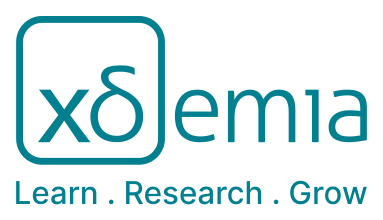MQTT - Fundamentals and Architecture
6 Enrollments Level : AdvancedRelevance
IoT is no longer just a trend; it is a necessity for businesses, industries, and even individual users. From building automation to remote monitoring systems and intelligent sensor networks, connectivity is shaping the future of technology.
The challenge? Finding efficient, scalable, and secure solutions to ensure that IoT growth is sustainable and manageable. MQTT and other optimized protocols play a fundamental role in this scenario.
The Internet of Things (IoT) is revolutionizing the way devices, machines, and people interact. In a world where connectivity is increasingly demanded and resources (bandwidth, energy, hardware) are limited, efficient and scalable solutions like MQTT are becoming the backbone of the IoT industry.
Why is IoT becoming dominant?
1️. Exponential growth of connected devices: It is estimated that by 2030, there will be over 25 billion IoT devices in operation.
2️. Resource optimization: Lightweight protocols like MQTT enable efficient communication even over unstable networks or with low bandwidth.
3️. Development of Smart Cities and Industry 4.0: Automated systems for environmental monitoring, intelligent transportation, and industrial production are already a reality.
4️. Increasing demand for automation and data analytics: IoT is at the core of artificial intelligence and machine learning, improving decision-making processes and optimizing resource consumption.
5️. Transition towards sustainable solutions: IoT helps reduce energy waste, improve resource management, and optimize production processes.
Abstract
MQTT (Message Queuing Telemetry Transport) is a lightweight, efficient protocol designed specifically for resource-constrained
devices and unreliable networks, prevalent in the IoT (Internet of Things) ecosystem. This course covers MQTT’s fundamental
concepts, including its publish/subscribe architecture, detailed message types, and critical message properties such as Quality of
Service (QoS)and the Last Will and Testament (LWT).
MQTT plays a crucial role in smart home and building automation due to its inherent advantages, such as minimal bandwidth usage,
scalability, reliability, and real-time communication capabilities.
This three-part training series provides a comprehensive introduction to the MQTT protocol, a lightweight and efficient communication
standard widely used in IoT and distributed automation systems.
Part 01 – Fundamentals and Architecture
The first module introduces MQTT's origin, purpose, and core design principles. It explains the client-broker architecture based
on the publish/subscribe (pub/sub) model and emphasizes its advantages in low-bandwidth and high-latency environments. Key
decoupling concepts (space, time, and synchronization) are discussed to highlight the scalability and flexibility of MQTT.
Learning Outcomes
Upon successful completion of this module, learners will be able to:
“Describe the fundamental principles of the MQTT protocol, explain the roles of clients and brokers within a publish subscribe architecture, and identify the key advantages of MQTT in IoT environments, including decoupling, lightweight communication, and scalability.”
Knowledge: Define what MQTT is and where it is used.
Comprehension: Explain how the publish/subscribe model works.
Application: Identify appropriate use cases for MQTT.
Analysis: Compare MQTT with other protocols like HTTP or AMQP.
Evaluation (optional): Justify why MQTT is suitable for low-bandwidth or mobile environments.
Prior Knowledge
In order to successfully follow Part 01 of the MQTT course, learners should ideally have the following background:
Basic understanding of networking concepts
• IP addresses, TCP/IP, ports.
• Difference between client and server.
• What a network protocol is.
Fundamentals of digital communication
• What messages, payloads, and connections are.
• Synchronous vs asynchronous communication.
Awareness of IoT scenarios
• Understanding what IoT devices are (e.g., sensors, smart plugs, mobile apps).
• Typical constraints: battery life, low bandwidth, real-time communication needs.
General familiarity with software architecture
• Even at a high level: understanding the role of "middleware", "brokers", or "message routing".
Keywords
- MQTT
- IoTProtocol
- PubSub Publish Subscribe
- MQTTBroker
- MQTTClient
- ClientServerModel
- TCPIP
- LowBandwidthCommunication
- MQTTArchitecture
- SpaceDecoupling
- TimeDecoupling
- SynchronizationDecoupling
- Scalability
- SessionPersistence
- SmartHome
- IndustrialAutomation
- ConnectedDevices
- HealthcareIoT
- SmartAgriculture
- ConnectedCars
Elements
1. About this Building Block
Descriptor
Description of the Building Block.
2. Video and knowledge clips
Video explains the fundamentals MQTT Readers
This video explains the fundamental concepts that will be used in the first MQTT chapter
3. Reader
Reader
This is the readable paper or comprehensive textual content of the lecture.
4. Self-assessments
Self-assesments
BB Self-assestments for the application of the concepts explained
